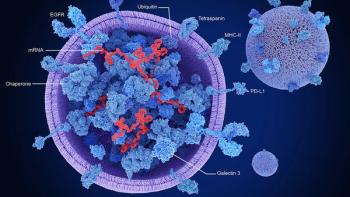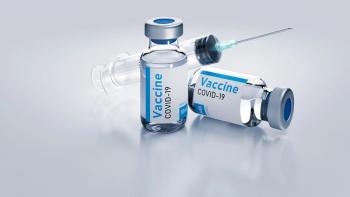
- BioPharm International-04-01-2020
- Volume 33
- Issue 4
On Point: Biologics Drive Growth in Pre-Filled Syringes
As a result of the rising use and development of biological drugs, the biopharma industry is witnessing an increase in the adoption of prefilled syringes.
With an aging population, the resultant increase in prevalence of chronic diseases, and more demand from patients for dosing convenience, the biopharma industry has seen an exponential increase in adoption of biological therapies delivered in prefilled syringes. The overall prefilled syringes market is forecasted to be worth nearly $10 billion by the year 2025, according to market research (1), driven in part by the rise in use of biological drugs.
“There are definitely more prefilled syringes compared to 10 years ago,” confirms Gregory Sacha, senior research scientist, Baxter BioPharma Solutions. “This is certainly due to the increase in therapeutic biologics.”
Another reason, in Sacha’s opinion, for the growth seen in the prefilled syringes market is the expanding ophthalmic market, where drugs are intended for injection into the eye for the treatment of macular degeneration and other complications related to aging and diabetes. “The volumes for injection into the eye are very low, around 20 µL to 30 µL,” he explains. “The low volumes are challenging to draw into syringes; therefore, prefilled syringes make it easier to deliver the intended dose.”
By removing the requirement of larger overfill volumes, such as those required when using vials for example, there is less waste of the drug solution with money and materials being saved when using prefilled syringes, asserts Sacha. These cost savings and reduction in waste are key advantages of prefilled syringes, in addition to patient convenience, as the dose is already prepared and ready for administration, he adds.
A variety of challenges
“Biologics as proteins by their very nature create a variety of challenges with respect to subcutaneous delivery via a prefilled syringe,” says George I’ons, head of product strategy and insights, Owen Mumford Pharmaceutical Services. “These challenges include the potential for interactions with many substances, which is why glass has historically been the material of choice for primary containers, including prefilled syringes. However, due to technological advances in polymer chemistry, plastic prefilled syringes are now beginning to emerge on the market.”
Looking beyond glass and plastic, I’ons notes that prefilled syringes comprise other materials that can also interact with biologic therapeutics. For example, tungsten-frequently used for needle mounting-and silicone-routinely applied in formulations to the syringe barrel for lubrication of the plunger-can interact with biological substances. “Newer innovations in syringe technology are exploring ways to limit or remove these substances,” I’ons states.
Common materials used for prefilled syringes include cyclic olefin polymer, cyclic olefin copolymer, polypropylene, and polycarbonate, adds Sacha. “However, there are less advances in the materials of construction than there are in the types of syringes that are available,” he says. “For example, there are syringes in development that require substantially lower overfill volumes. There is also a syringe in development that consists of multiple layers that include an oxygen barrier. And, there are needles available with narrow diameters to reduce pain upon injection.”
Safety considerations
When formulating biologics, the solution can often be highly viscous, which leads to specific challenges in terms of administration via prefilled syringes. “Viscosity can impact variables such as force to inject, dose delivery time, and needle gauge which all need to be determined and tested,” states I’ons.
Agreeing, Sacha emphasizes that although there is less concern for breakages with syringes than glass vials, viscosity can cause difficulties and, as a result, early studies often include flow of the solution through the needle intended for use and conducting break force and glide force studies to monitor the pressure needed to initiate movement of the plunger and continuation of the movement.
“Additionally, challenges with biologics filled into syringes typically include possible interactions with the molecule and silicone used to lubricate the barrel of the syringe and the needle,” Sacha continues. “Interactions with silicone can lead to the formation of aggregates.” Aggregates are well known to have a negative impact on the efficacy and safety of biologic drugs, potentially giving rise to harmful side effects for patients.
Discussing the intricacies of combination products, I’ons adds that human factors (HF) are essential considerations in the development and regulatory approval processes. “A rigorous HF process is key to understanding user interaction and shaping user-centered risk management relating to the drug delivery device,” he says. “HF will examine the device in a series of use scenarios with a sample of all intended users, including those with impairments, to ensure safe and effective use.”
In I’ons opinion, a key safety consideration for combination products using prefilled syringes is effective needle shielding, which also requires companies to be compliant with needlestick prevention regulations that are in place in the United States (2) and Europe (3). “These regulations are key with respect to preventing transmission of blood-borne viruses such as HIV and hepatitis C,” he notes. “The regulations state that employers are responsible for the safety of their staff whether in an acute hospital setting, an alternate site, or domestic home environment. Therefore, designs that incorporate automatic or passive deployment of the needle shielding during use are seen as advantageous as no additional steps are required by the user as part of the routine injection procedure.”
Testing for safety
“Injection devices that contain drugs and biologics are known as combination products and have a specific regulatory pathway via the FDA for the US market,” explains I’ons. “In the European Union (EU) no such category exists at present, although there is ongoing work to create one, so drug–device combination products are still approved as medicinal products.”
For combination products, it is necessary for companies to ensure all necessary development and testing are performed on drug delivery devices, as would be the case for any medical device, to ensure safety. “Testing is required even though drug delivery devices are not subject to the usual regulatory approvals, such as 510(k) in the US market,” confirms I’ons.
Components of both the syringe and plunger should be tested for any extractables and leachables, notes Sacha. “The materials are often complex mixtures that have the potential to interact with certain components in the injectable formulation,” he says.
Additionally, once the components of the device have been filled, then break force or glide force studies can be conducted, which allow companies to ensure that the prefilled syringe functions correctly. These studies are also performed at certain time points during stability testing, Sacha remarks.
Testing, such as for biocompatibility, aging studies, and transit testing, along with normal validation and verification sequences, forms part of the routine development process for combination products, I’ons continues. “The goal is always to demonstrate that the final combination product is safe for the end user,” he says.
Emerging solutions and trends
As a result of challenges during formulation development of biologics or biosimilars, many companies are considering and developing higher volume prefilled syringes, asserts I’ons. “Therefore, the industry is seeing a projected increase in demand for prefilled syringes with a volume greater than 1 mL (which is the common volume used), typically to a volume of 2.25 mL,” he notes. “Consequently, prefilled delivery devices for 2.25 mL primary containers are now starting to emerge on the market, most of which are also incorporating needle stick injury safety features.”
Moreover, with the upswing in trend for increased volumes, industry is also witnessing growing interest in wearable drug delivery devices. “These wearable devices can potentially accommodate volumes in excess of 10 mL,” says I’ons.
Other solutions in development, and also some that are already on the market, are silicone-free syringes and needles with reduced amounts of silicone, adds Sacha. “Both solutions can be helpful for reducing interactions with the molecule and silicone,” he says. “In addition, using less silicone on needles can prevent, or at least reduce, the amount of silicone that is deposited in the injection site, which is particularly useful in intraocular injection.”
Discussing drug delivery devices further, I’ons reveals that there are several trends taking place and emerging within the industry. “Many companies are working on designs for connected devices, which allow the transmission of key usage data from the device to the pharma company and third parties, such as payors,” he says. “In addition, the use of devices connected to apps creates an opportunity for pharma to provide the patient with education, training and support around their medication and disease management. It is hoped that provision of this type of information will aid compliance and ultimately may positively impact patient outcomes.”
Furthermore, I’ons points out that there is an increasing focus on sustainability. “This focus is also resulting in pharma companies examining the number of disposable devices they market and therefore looking at alternatives such as reusable devices to help reduce waste,” he summarizes.
References
1. Global Market Insights, “Prefilled Syringes Market Size by Type (Glass, Plastic), by Design (Single-Chamber, Dual-Chamber), by Applications (Diabetes, Rheumatoid Arthritis, Anaphylaxis, Antithrombotic/Thrombolytic Therapy), Industry Analysis Report, Regional Outlook, Application Potential, Competitive Market Share & Forecast, 2019–2025,” gminsights.com, July 2019.
2. M.F. Tatelbaum, Pain Physician, 4 (2) 193–195 (2001).
3. European Commission, “Council Directive 2010/32/EU of 10 May 2010 Implementing the Framework Agreement on Prevention from Sharp Injuries in the Hospital and Healthcare Sector Concluded by HOSPEEM and EPSU” (Brussels, July 17, 2009).
Article Details
BioPharm International
Vol. 33, No. 4
April 2020
Pages: 44–46
Citation
When referring to this article, please cite it as F. Thomas, “On Point: Biologics Drive Growth in Pre-Filled Syringes,” BioPharm International 33 (4) 2020.
Articles in this issue
over 5 years ago
Bioreactors Redefine Upstream Productivityover 5 years ago
Critical Knowledge for Preparing Auditsover 5 years ago
Can Vaccine Development Be Safely Accelerated?over 5 years ago
What’s New in Downstream Technologiesover 5 years ago
Benchtop Centrifugesover 5 years ago
Chromatography Columnsover 5 years ago
Ensuring Smooth Tech Transfer of Bioprocess Operationsover 5 years ago
Biosimilars Tackle Interchangeability Standardsover 5 years ago
Contamination Control for Cell TherapyNewsletter
Stay at the forefront of biopharmaceutical innovation—subscribe to BioPharm International for expert insights on drug development, manufacturing, compliance, and more.





